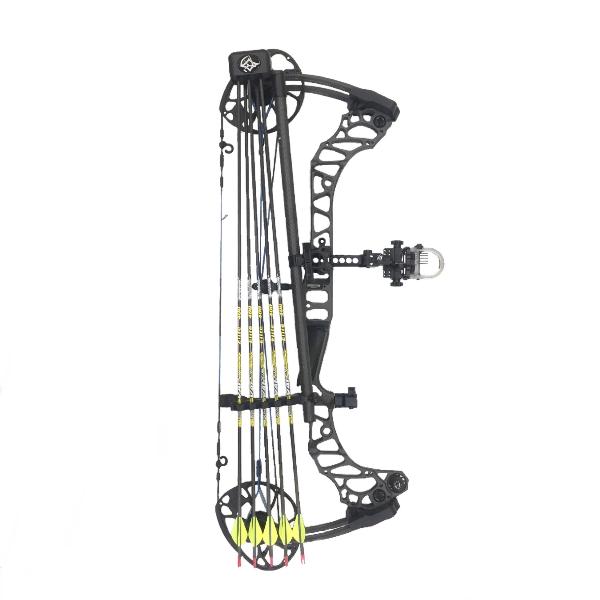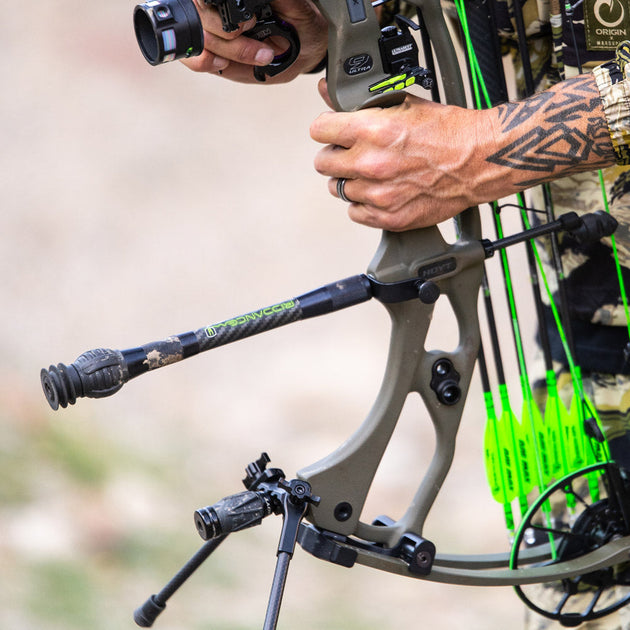Picking the most effective Archery Stabilizer: Tips and Recommendations
Wiki Article
The Ultimate Guide to Picking the Right Archery Stabilizer for Boosted Precision
Amongst the numerous devices readily available, an archery stabilizer plays a significant function in improving precision. In this detailed overview, we will check out the vital factors to take into consideration when selecting an archery stabilizer for improved precision. Whether you are an experienced archer looking to upgrade your equipment or a beginner seeking advice, join us on this trip as we untangle the secrets to picking the perfect archery stabilizer.Length: Finding the Ideal Stabilizer Size
Identifying the excellent stabilizer size is crucial when selecting an archery stabilizer for optimum efficiency. The length of a stabilizer directly influences the balance, security, and accuracy of the bow. A stabilizer that is too long can make the bow really feel hard and top-heavy to regulate, while a stabilizer that is also short may not provide adequate security and dampening of resonances. Discovering the appropriate size calls for thinking about aspects such as the archer's shooting design, bow weight, and personal preference.A longer stabilizer, normally ranging from 8 to 12 inches, can supply greater security and minimize bow torque. This is especially useful for archers that fire with a high draw weight or those who tend to torque the bow throughout the shot. The included size aids to distribute the weight evenly and counterbalance any kind of torque or movement.
On the other hand, a shorter stabilizer, normally in between 4 to 7 inches, provides extra maneuverability and quicker feedback. It is favored by archers who fire with a lower draw weight or those that require even more mobility, such as seekers or 3D shooters. The shorter length allows for less complicated motion through tight spaces and faster changes.
Eventually, the optimum stabilizer length is a matter of individual choice and shooting style. It is advised to explore different sizes and observe the results on stability and precision. Consulting with knowledgeable archers or experts can additionally supply valuable understandings and recommendations.
Weight: Establishing the Appropriate Stabilizer Weight
After thinking about the optimal stabilizer size, the following crucial variable to consider when picking an archery stabilizer is identifying the proper stabilizer weight - archery stabilizer. The weight of the stabilizer plays a vital duty in boosting accuracy and stability during the shotThe weight of the stabilizer affects the balance and control of the bow. A heavier stabilizer can offer enhanced stability and control, especially for shooters with a propensity for irregular shots or unsteady hands. It aids to soak up the vibrations and recoil generated by the bow, reducing torque and minimizing the effect on the arrowhead's trip.
On the other hand, a lighter stabilizer enables a quicker and much more responsive bow. It can be beneficial for shooters that focus on ability to move and speed over stability. Lighter stabilizers likewise decrease tiredness during lengthy shooting sessions or competitions.
To figure out the ideal stabilizer weight for your needs, it is very important to consider your shooting design, physical toughness, and bow arrangement. Trying out different weights and observing the influence on your shooting efficiency is essential to locating the best equilibrium.
Eventually, the optimal stabilizer weight will vary for every individual archer. It is recommended to begin with a moderate weight and make adjustments based on individual choice and shooting outcomes. Bear in mind, the goal is to achieve a controlled and steady shot, while additionally keeping convenience and simplicity of use.
Materials: Picking the Right Products for Resilience and Performance
When selecting an archery stabilizer, it is vital to carefully think about the materials utilized in its construction to make certain sturdiness and optimize performance. The selection of materials can substantially impact the general quality and performance of the stabilizer.One of the most typically made use of materials for stabilizers is carbon fiber. Additionally, carbon fiber stabilizers are resistant to temperature modifications and are less likely to warp or bend over time.
One more preferred product for stabilizers is aluminum. Light weight aluminum stabilizers additionally use a large variety of customization alternatives, permitting archers to change the weight and length to match their preferences.
Some stabilizers are created making use of a combination of materials. A stabilizer might have a carbon fiber core covered in an aluminum shell. This hybrid layout integrates the most effective qualities of both materials, supplying optimal stability, longevity, and efficiency.
Layout: Understanding the Different Stabilizer Styles and Their Results
Thinking about the materials utilized in archery stabilizers, it is necessary to now look into the various layouts of stabilizers and their respective effects. The layout of an archery stabilizer plays a crucial function in boosting precision and reducing vibration throughout the shot. There are several various designs offered in the marketplace, each with its own one-of-a-kind attributes.
One more prominent style is the side bar stabilizer. This design entails attaching a brief pole sideways of the bow, parallel to the primary long pole. Side bar stabilizers help in counteracting the weight of accessories, such as quivers or views, and offer added stability to the bow.
Some stabilizers come with flexible weights. These stabilizers allow archers to fine-tune the equilibrium and feel of their bows by including or getting rid of weights. This function is especially helpful for archers who prefer a particular weight circulation or intend to explore various arrangements.
Moreover, some stabilizers integrate dampening modern technology to decrease vibration and noise. These stabilizers typically have integrated dampeners or use products that take in resonances, leading to a smoother and quieter shot.

Devices: Checking Out Additional Accessories for Improved Security
These devices are designed to work in combination with the archery stabilizer to give an even better level of stability and accuracy. One such device is the V-bar or the side stabilizer install.An additional accessory that can enhance stability is a bow sling. A bow sling is a strap that attaches to the bow and allows the archer to keep an unwinded hold on the bow manage without the concern of dropping it (archery stabilizer). This loosened up hold helps to reduce muscular tissue stress and permits a more steady and consistent shot
Additionally, a stabilizer weight system can be used to tweak the balance and security of the bow. These weight systems normally are composed of tiny weights that can be added or gotten rid of from the stabilizer to adjust the equilibrium point of the bow. By discovering the ideal equilibrium factor, archers can accomplish a much more precise and secure shot.
Final Thought
In home final thought, choosing the best archery stabilizer involves considering elements such as length, weight, products, design, and additional devices. The ideal stabilizer length and weight will certainly depend on specific preferences and shooting style.Establishing the ideal stabilizer length is essential when selecting an archery stabilizer for ideal performance. A stabilizer that is also long can make the bow feel top-heavy and tough to control, while a stabilizer that is also short may not give enough stability and dampening of resonances - archery stabilizer.Taking right into account the products made use of in archery stabilizers, it is important to now dig right into the various designs of stabilizers and their particular effects. Side bar stabilizers help in reversing the weight of devices, such as quivers or sights, and offer added security to the bow
These weight systems generally consist of small weights that can be added or eliminated from the stabilizer to change the balance point of the bow.
Report this wiki page